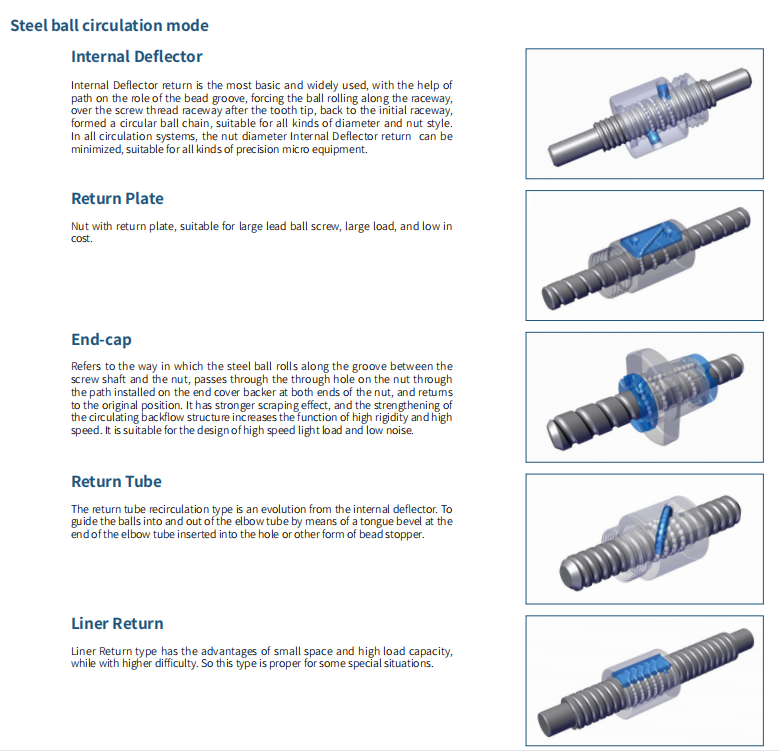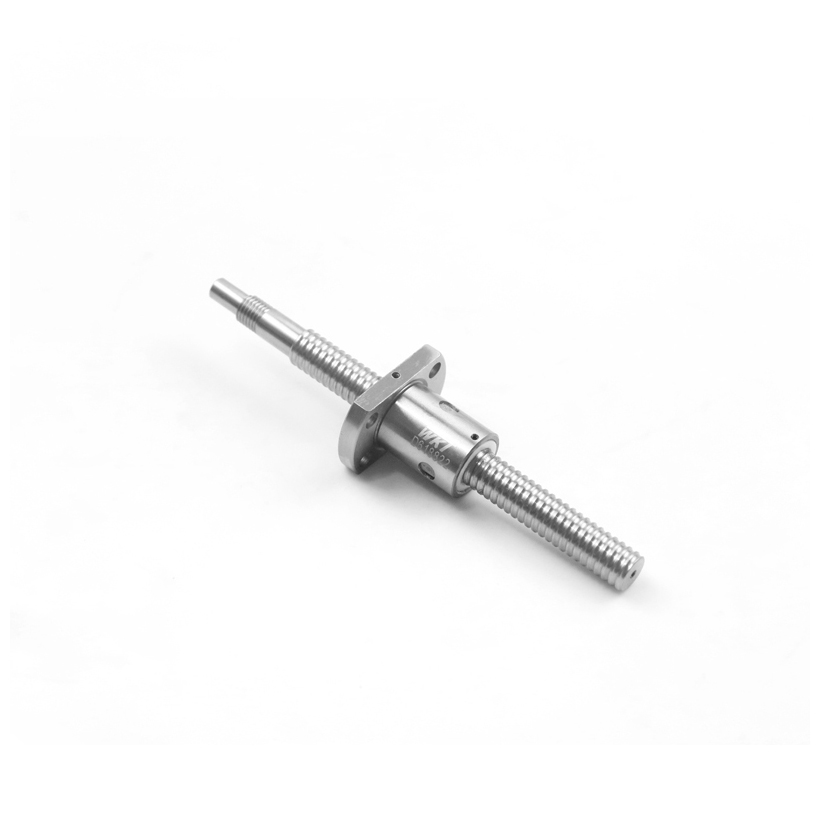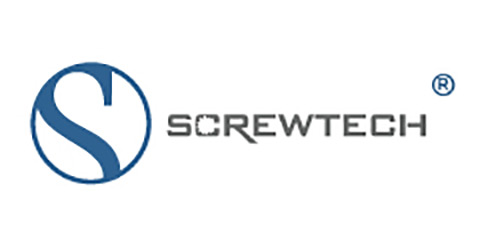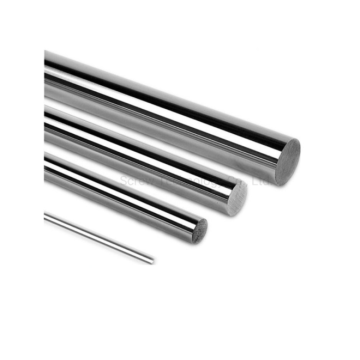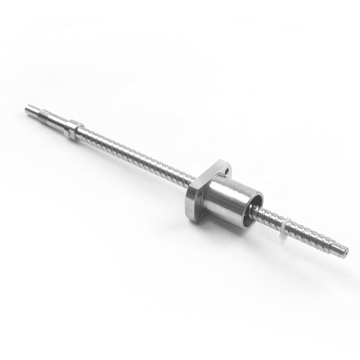10mm diameter 1mm pitch thread nut ball screw
Nominal diameter:4 to 12 mm Lead 1 to 10 mm Cylindrical nut with threaded
End : easy mounting Better nut geometry Less sensitive to misalignment
Excellent repeatability: high positioning quality
Internal recirculation with inserts: smoother running, good backdriving and improved security Higher dynamic load capacities Greatly reduced noise Corrosion resistant screw shaft available on request
There are two commonly used circulation methods:
outer circulation and inner circulation. The ball that sometimes comes out of contact with the screw during the cycle is called the outer loop; the ball that always keeps in contact with the screw is called the inner loop. Each closed loop of the ball is called a row, and the number of leads contained in each closed loop of the ball is called the number of turns. Each nut of the inner loop ball screw pair has 2 rows, 3 rows, 4 rows, 5 rows, etc., each row has only one turn; each row of the outer loop has 1.5 turns, 2.5 turns and 3.5 turns.
1) Outer circulation: The outer circulation means that the balls return to the screw nut through the spiral groove or intubation on the outer surface of the nut after the circulation process is over. The return methods of the outer circulation ball screw nut pair according to the ball circulation mainly include end cap type, intubation type and spiral groove type. Commonly used outer circulation method: end cap type; intubation type; spiral groove type. In the end cap type, a longitudinal hole is machined on the nut as a return passage for the balls. The cover plates at both ends of the nut have return ports for the balls, and the balls enter the return pipe to form a cycle. Intubation type, it uses an elbow as the return pipe. This structure has good manufacturability, but because the pipe protrudes from the nut body, the radial dimension is relatively large. Spiral groove type, it is a spiral groove milled on the outer circle of the nut, the two ends of the groove are drilled with through holes and tangent to the threaded raceway to form a return channel. This structure has a smaller radial size than the cannula structure, but Manufacturing is more complicated. The outer circulation structure and manufacturing process of the outer circulation ball screw are simple and widely used. The disadvantage is that it is difficult to smooth the joints of the raceways, which affects the stability of the ball raceways.
2) Inner circulation: Inner circulation adopts reverser to realize ball circulation. There are two types of reverser. Cylindrical convex key reverser, its cylindrical part is embedded in the nut, and the end is provided with a reverse groove 2. The reverse groove is positioned by the cylindrical outer surface and the round key 1 at the upper end to ensure the alignment of the thread raceway direction. Oblate insert reverser, the reverser is a general round head flat key insert, the insert is embedded in the slot of the nut, and the end is provided with a reverse groove 3, which is positioned by the outer contour of the insert. Comparing the two inverters, the latter has a smaller size, which reduces the radial size of the nut and shortens the axial size. However, the outer contour of this kind of reverser and the dimensional accuracy of the slot on the nut are required to be higher.
